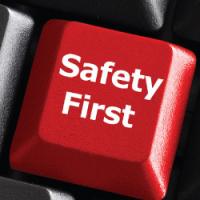- Posts: 350
- Thank you received: 11
Hard Hat 101
- Safety Toolbox Talk Webmaster
-
 Topic Author
Topic Author - Offline
- Administrator
-

Hard hats are commonly used in many types of workplaces to protect employees from head trauma caused by falling objects, striking their head against an object, or electrical hazards. The hard hat is a piece of personal protective equipment designed to individually protect an employee when all other methods of protection cannot. Often, its use has been required on many work sites since all hazards cannot be eliminated.
There are two types of hard hats — Type I and Type 2. Type I helmets reduce the force of impact resulting from a blow only to the top of the head. Type II helmets reduce the force of impact resulting from a blow which may be received off center or to the top of the head.
Two classifications of helmets have been established for electrical protection. They are:
- Class G (General) provide protection from low-voltage conductors and are tested to less than 2,200 volts;
- Class E (Electrical) provide protection from high-voltage conductors and are tested at 22,000 volts. Class C (Conductive) are not intended to provide electrical protection.
The outer portion of the hat is the shell, which often has a peak that extends forward or a brim, which extends outward around the entire lower shell. The second component is the harness, which attaches to the shell to maintain the hard hat on the wearer’s head. When a force strikes a properly fitted hard hat, the force is distributed throughout the entire hard hat. It prevents the force from concentrating at one point.
Inspect a hard hat when it is new and first put into use, prior to each day’s use and after an incident where the integrity has been challenged. When inspecting a new hard hat, ensure that it is the proper hat for the job or the exposure to be expected and make sure all parts are included with the hard hat. Also, follow the manufacturer’s instructions to assemble or attach the parts and adjust the headband for proper fit; snug, but not tight.
When inspecting a hard hat prior to each day’s use, look for gouges; cracks; deterioration; chalking or discoloration; flaking; suspension properly attached to the shell; all straps in good condition; and cleanliness; suspension and the shell. When a hard hat is damaged, replace the damaged part or replace the entire hard hat.
Please Log in or Create an account to join the conversation.
